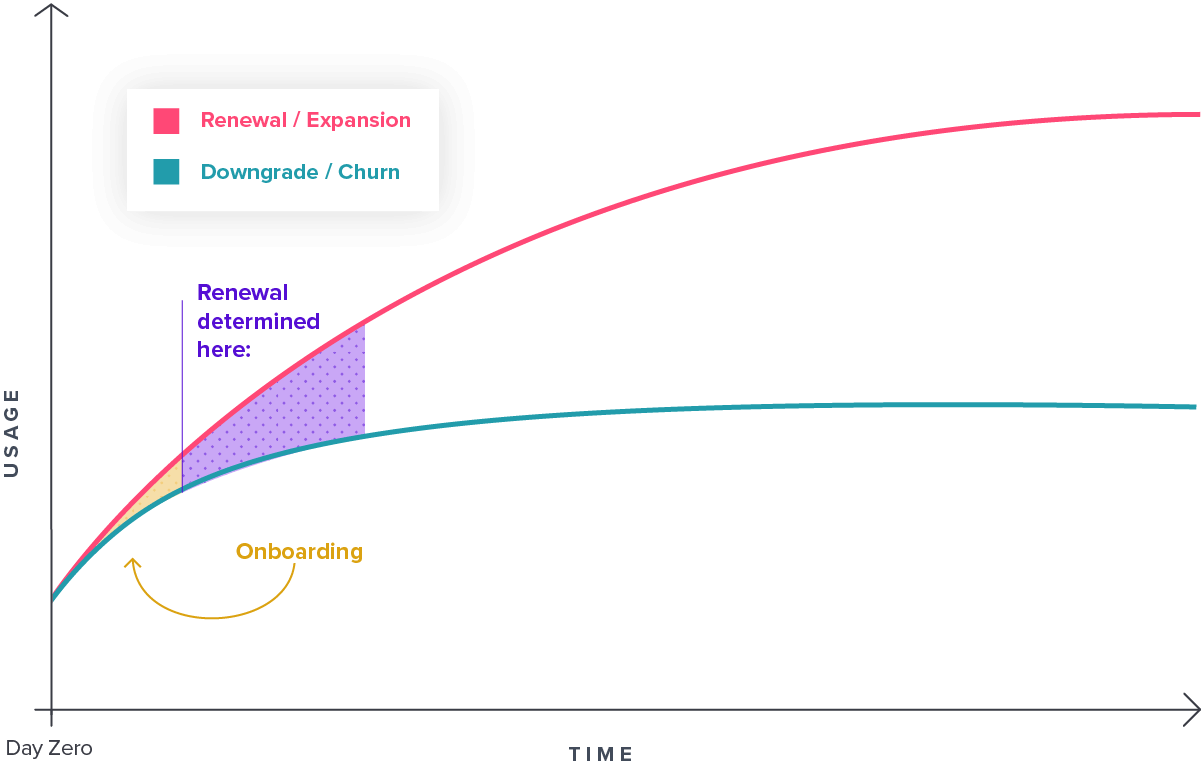Product Management 101: The Value Gap
When a customer starts using your product, they have certain expectations of how it will perform and what capabilities it should have. If the actual product experience doesn’t match these expectations, the chances that this customer will churn go up. This potential mismatch between reality and expectation is known as the value gap.
What is the value gap?
The value gap occurs when the perceived value and experienced value for a software product don’t overlap, creating a “gap” between the user’s expectations and reality. In Pendo’s product benchmarks report, researchers found that only 30% of users exhibit regular usage in the first 90 days of using a new product, which suggests that most users are not experiencing the value they anticipated at purchase. Often the problem isn’t that new users are incapable or the product is insufficient, but rather that there is an educational barrier preventing customers from discovering value in the app.
Why does the value gap matter?
If new users can’t easily find value in a product, they are likely to abandon using it altogether, especially since the rise of SaaS applications has made switching costs extremely low. Companies need to remember that customer churn doesn’t happen when the contract ends — it happens when users no longer find your product useful or valuable.

How can I minimize my product’s value gap?
In order to close (or prevent) the value gap, companies need to implement an effective onboarding experience so that new users learn and find value in the product as quickly as possible. Although there are many ways to administer onboarding, many companies are turning to an in-app approach. With in-app onboarding, companies are able to provide contextual information to new users as they navigate the product, and help them utilize the functionality that’s most relevant to them.
Here are some best practices for building an effective in-app onboarding strategy:
1. Keep it simple: try to make your onboarding flow as simple as possible — the last thing you want is users to already feel confused about how to use your product when they first log in.
2. Plan for different learning styles: since everyone learns differently, consider multiple formats (videos, illustrated walkthroughs, etc.) and ways for users to progress through onboarding (e.g. letting them explore topics in their preferred order).
3. Personalize whenever possible: your product likely serves multiple types of users, so it’s important to tailor in-app onboarding to different user segments and their specific needs and workflows required to drive success.
4. Designate ownership: make sure you establish clear ownership over onboarding (whether it’s a dedicated onboarding role or a member of product or customer success) and include the right stakeholders in the planning and execution processes.
Recommended reading
“Eight Tips for Effective Win-Loss Analysis” by Andrew Peterson
Why do customers end up churning? Did they perceive any product gaps? What other factors influenced their decision? Which alternative solutions did they consider? Can you win back their business in the future? This type of calculation is called win-loss analysis and is an increasingly popular practice for product-led organizations.
“Empowering the Product Troika” by Natalie Doan-Dunnum
Great products are created at the intersection of the “product troika,” or trio: engineering, design, and PM. How can these three teams work together to quickly guide the user to value in the product? At last year’s Pendomonium event, Christian Idiodi of the Silicon Valley Group discussed strategies for empowering these three groups to close the value gap through effective communication and collaboration.
“4 Product Value Proposition Models for Product Managers” by the Roadmunk team
Crafting a brief, “elevator pitch-style” product value proposition is a worthwhile exercise for every product manager. After all, how can you communicate value to your customers if you don’t have a clear understanding of what that value is? Here are a few tips for encapsulating your product’s value into a single statement.
“Shipped Is Only the Beginning: The 10/10/10 Approach to Product Rollouts” by Russell Olsen
Frequently and rapidly launching new features and products is a whirlwind process for even the most highly regarded product teams. Yet, for companies that have any hope of scaling, it’s an imperative organizational mission. The 10/10/10 approach to product rollouts can help you ensure that the benefits of new features are clear to your customers from the start.

